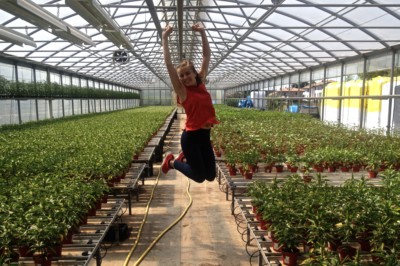
The influence of urban agriculture is a significantly widespread movement and food is an essential necessity affecting everyone.
In 2010, a world agricultural report prepared by 500 scientists and commissioned by the United Nations and the World Bank concluded that our current form of agriculture is not equipped to feed Western countries and developing countries in the future. As the population of people living in urban areas grows from 50% to 75% in the next 35 years, it is crucial to produce local food. Sacrificing urban land for farming is not the solution, so we must integrate food production into existing and future buildings. Here’s why:
Growing food in urban spaces is increasingly prevalent on the global agenda as it contributes holistically to social, economic, and environmental scopes. First in the light of food security, a local agri-food system provides a locally controlled source of food. It is expected that the overall risk of food insecurity in many countries will increase in the next 10 years (ICA 2016). Current food systems are being challenged to provide permanent and reliable access to adequate, safe, local, diversified, fair, healthy and nutrient rich food for all. Reducing waste, and fostering education in food growing can improve the resilience of global and local food systems.
There are three primary environmental benefits from organic urban agriculture – preserving biodiversity, tackling waste and reducing the amount of energy used to produce, transport and distribute food (Viljoen, Bohn and Howe 2005). Moreover, rooftop farms can also perform as green roofs, whose layers of vegetation shade the surface of the building (resulting in energy reduction), filter particles from the air, mitigate the urban heat island effect, and retain stormwater.
Socially speaking, the concept of urban agriculture involves cultural, educational and leisure activities, shopping habits, diet, and health concerns. Community gardening can bring neighbors together around a common goal and empowers people by putting food security into their own hands, making them more independent. Evidence is building that when gardeners and small scale famers produce their own food, their food consumption patterns and dietary knowledge improves. Overall, gardening is associated with satisfying labor, mental relaxation, outdoor activity, socializing, exercise, and a means to produce food and beauty.
In terms of economics, urban area food production can operate at a for-profit farm scale, producing high quality fresh foods on relatively small amounts of space. True, it’s unlikely that urban agriculture will ever compete with rural farming, but it doesn’t have to. Successful urban farms use waste resources from the urban environment and take advantage of the small scale to reduce the need for mechanization and/or expensive chemical inputs. This leads to an an increase in entrepreneurial activities and the creation of jobs, as well as reducing food costs.
Even though the benefits are tremendous, and the trend is accelerating, one steady challenge for urban farmers and municipal decision makers engaged with urban agriculture has been a lack of relevant information and technical assistance (Golden, 2013). Research institutions have been serving rural farmers for more than 150 years, but when a rooftop farmer has a leaking roof, or has lead contaminants in their soil from vehicle exhaust pollution, whom can they turn to?
After carrying-out case studies from more than 30 projects of building integrated agriculture, and even working on a number of roof farms, I have produced an online database (www.upfarming.net/casestudies) to represent an array of design methods, business models, means of financing, and municipal involvements (when applicable). The aim of this site is to serve as a source of information to assist and inspire urban farmers, designers, potential investors, municipalities, and stakeholders to engage in local food production.
The objectives of building integrated agriculture are remarkably diverse. The benefits and functions range from leisure, health, market, and increasing food security. There is also an array of systems from green roofs, to green houses, to facade farms. So as building-integrated-agriculture grows, it is crucial to develop policies, regulations, and guidelines respectful to system diversity. The ultimate goal of my project is to contribute in these developments which will help streamline urban farms as socially, environmentally, and economically productive projects.
Kelai Diebel
Kansas born and globally raised, Kelai (Claire Diebel) earned her interior architecture bachelor’s degree at Columbia College Chicago, studied abroad at the Dublin Institute of Technology, and completed her architecture master’s degree at Tongji University in Shanghai. Now, her passion for green infrastructure design and research has earned her a one-year research grant to investigate building integrated agriculture and bridge findings between Germany, US, and China.Kelai’s undergraduate studies where focused on adaptive reuse. It wasn’t until she moved to China in 2012, and was met first-hand by environmental issues, that her design focus pivoted towards green infrastructure. Her master’s thesis work was centered on the question: “What factors influence successful green roof development in Shanghai?” She found the answer in policy framework, and so her next move was to Germany, the green roof policy pioneer. There she was awarded the 2016/2017 German Chancellor Fellowship from the Alexander von Humboldt Foundation to take a closer look at food production on roofs with her academic host and green roof expert, Dr. Manfred Koehler.
Contact
kelai.diebel@gmail.com
